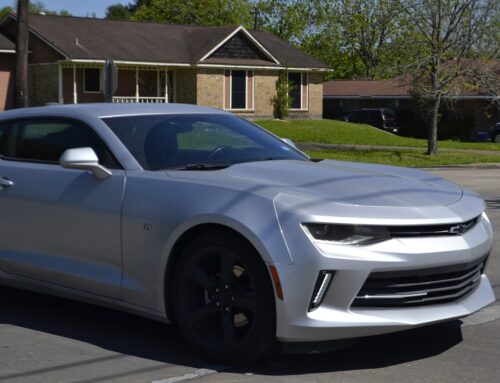Getting into financial distress doesn’t happen overnight. A series of smaller events add up to the need to file for bankruptcy, so understanding your day-to-day expenditures is vital in staying on a safe financial path. While having a vehicle is a necessity for most people in today’s world, any buyer needs to understand the terms of the car loan they sign in order to obtain that vehicle.
Doing the calculations to assess how much car you can afford before you begin shopping can save a buyer hundreds – if not thousands – of dollars over the course of the loan. Here are the key elements that a car buyer should know before visiting the dealership and signing on the dotted line.
1. Calculate what you can afford: Experts recommend that a monthly car payment should not exceed 10% of take-home pay. Therefore if you take home $3,5000 per month, you can afford a $350 car loan. Of course, this number assumes that you are prudent with your other monthly expenses.
A car loan represents a significant monthly payment, so you’ll want to be practical about how long you want to make these payments. A longer-term loan will result in a lower monthly payment, but you will pay far more in interest over the life of the loan. Long-term loans also increase the likelihood that the borrower will become upside down on the loan, meaning that you will owe more than the vehicle is worth at some point.
Financial site NerdWallet recommends a maximum loan term of 36 months for a used car and 60 months for a new car.
2. Calculate the appropriate car loan amount: Your monthly payment is not based solely on the price of the car. Other factors come into play, such as if you buy a new or used car; the length of your loan term; and your credit score, which influences the loan’s APR (annual percentage rate). Once you understand all of the individual elements of the loan, a car loan calculator can help you zero in on the price of the vehicle you can afford.
3. Know your purchase price: The loan amount you can afford may not be the price of the vehicle you can afford. Additional factors to consider include any trade-ins, how much down payment you offer, and sales tax and fees. A general rule of thumb is to assume 10% over the sales price for fees. So if the car is listed at $10,000, a probable “out-the-door cost” is $11,000.
* Sales tax includes any applicable state or local taxes and typically run 5-10% of the price of the vehicle.
* Registration and documentation fees can be calculated on your local Florida DMV site.
Car buying has come a long way, and automotive sites such as Kelley Blue Book, Carvana, and AutoTrader offer search tools that will narrow down the cars available in your price range and geographic area. For those on a set budget with little disposable income, it is best to estimate low when looking for a car to easily absorb any costs that arise.
Remember, you will be expected to make this payment every month for several years at a minimum. If you have a change of circumstance, the payment will still be required. Therefore, it is sensible to only tie yourself to a payment you feel confident about. Although it may be tempting to buy a vehicle at the top of your price range, finding a good deal a bit lower than you can afford may be more practical.
However, sometimes a consumer cannot avoid a negative turn of events. Should you find yourself in a financial crisis and require assistance from a bankruptcy attorney, call the Sarasota offices of Richard V. Ellis. We will help you determine the best course of action to get you back on track to financial freedom.





